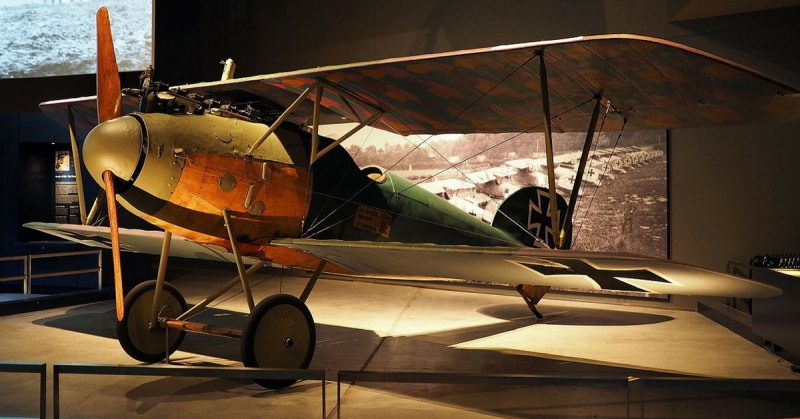The Albatros D. Fighters were a mainstay of German air power during WWI.
Four Models
During the fast-changing aerial warfare of WWI, what made for a good plane was constantly changing. It was reflected in the Albatros D. fighters. No such planes existed when the war broke out in 1914, but by the end of the war, the German military had fielded four different versions of the Albatros D. alone, as well as many other models of planes.
Numbered One to Five
Although only four types of Albatros D. served in the war, they were numbered from I to V. Models I, II, III, and V all served on the front. No model IV saw action.
A Mid-War Plane
The Albatros D.I was introduced early in 1917, more than halfway through the war.
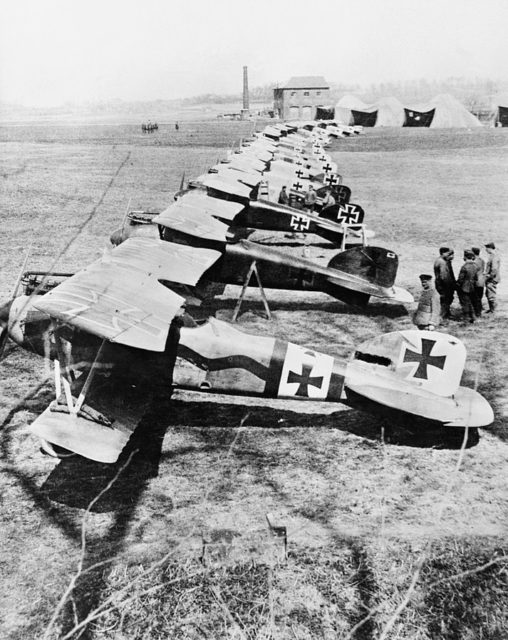
Responding to Enemy Advances
The Albatross D. was produced in response to successes by Allied planes.
Early in 1916, there was a period known as the “Fokker Scourge.” For several months, the Germans had complete superiority in the air over the Western Front. The Allies suffered terrible losses.
The reason behind the German success was the same as the one that eventually destroyed their edge – technology. Fokker E fighters (E for Eindecker, indicating a single pair of wings) out-performed Allied planes in engagement after engagement. German pilots such as the famed Max Immelmann had a long string of successes as they mastered the agile planes.
Then came advances in Allied air power. The de Havilland and Nieuport fighting scouts proved superior to the Fokker E. After only three years in existence and little more than a year as a combat plane; the Fokker E series was obsolete.
For the next few months, the Allies ruled the skies, but the Germans were preparing a response. They developed their own biplane and triplane fighters. Among them was the Albatros D.
Aerodynamic Fuselage
The elliptical cross-section of the Albatros D.’s fuselage was a step forward in aerodynamic design. It was an area where advances were quickly being made, as plane designers developed their understanding of the principles of flight and of what worked well in practice. It was one of the factors that allowed the plane to do better than the opponents it went up against.
Two Powerful Engines
The Albatros D. was a single engine plane, but two different types of engines were used to power it. One option was the Benz Bz.III, the other the Mercedes D.III engine. When the Albatros was first produced, they were the most powerful engines fitted to any fighting scout plane.
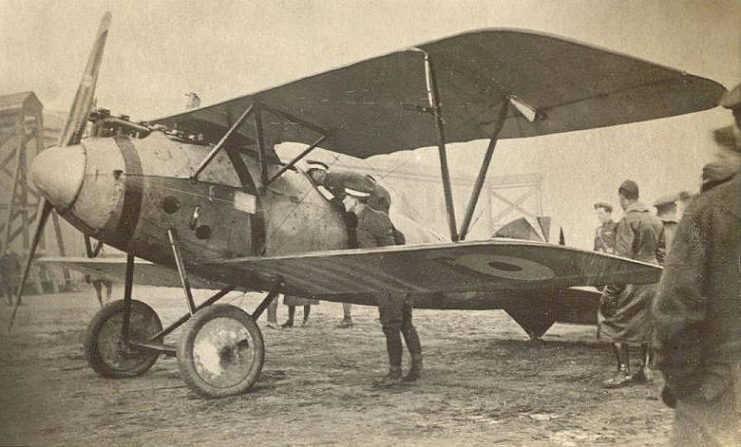
Twin Guns
The Albatros D. was fitted with twin synchronized machine-guns. They were belt-fed 7.92mm Spandau guns. Combined with the interrupter gears that allowed German pilots to fire safely through the space occupied by their own propellers, they turned the scout plane into a fearsome instrument of destruction.
Fast Climbing
The Albatros D. was a fast climbing plane, able to reach an altitude of 1000m in only six minutes. It was an impressive rate of ascent. It was particularly important because of the way that fighter pilots fought. Manfred von Richthofen, the most famous air ace of the whole war, had developed tactics of descending from above. It gave the attacking plane greater speed, an element of surprise, and an advantage in the maneuvers that followed the first moment of engagement. Being able to climb quickly made it easier to pull off the battle winning tactic.
The Albatros D.s became better as they went along. The D.V was able to climb 1000m in four minutes; two-thirds of the time needed by its predecessor.
Flown by the Best
The Albatros D. series impressed the German pilots. Some of the greatest flyers of the war took to the skies in Albatros D.s. They included both Manfred von Richthofen and the man who trained and encouraged him, aerial innovator Oswald Boelcke.
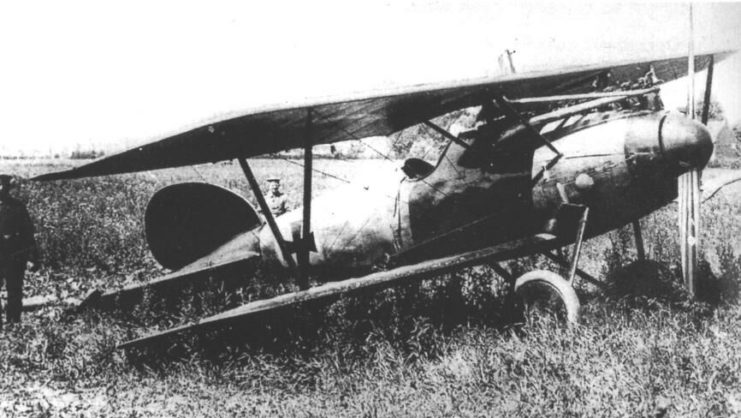
Improvements in the D.II
When the D.II was introduced, it included several improvements over the D.I. The top wing was lowered, giving the pilot a better view over it. The placement of the radiator in the upper wing segment also helped by improving the plane’s aero dynamism.
Rigidity for Maneuvrability
The D.III, in turn, provided improvements upon the D.II. Its wing setup was changed to allow for greater maneuverability, vital in the increasingly frantic and fast-paced dogfights of the Western Front.
To achieve it, the rigidity of the wings had to be improved. V-shaped struts were added for this.
Outclassed Again
By late 1917, the D.III was being outclassed by a new wave of Allied fighters. It led to the creation of the D.V, the last Albatros D. fighter.
Plywood Fuselage
The D.V had a brilliantly streamlined fuselage, designed to regain the edge from the enemy flyers. It was skinned in plywood instead of canvas as was common in WWI planes.
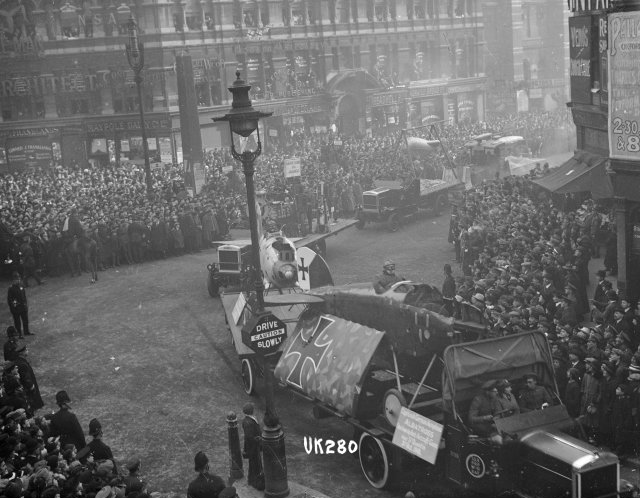
The Prolific D.V
Vast numbers of D.Vs were produced. On the Western Front alone, 1500 of them took flight. They made up for their shortcomings compared to enemy planes by the sheer amount that they could field.
Weak Wings
Unfortunately, flying the D.V proved hazardous to the pilots. Aside from those lost in combat, a disturbing number died in accidents as their planes disintegrated around them. It was the result of a structural weakness in their wings, much like the one that had led to the abandonment of the Fokker triplane.
In an era of great experimentation, some new models worked, but some ended in disaster.
Speed
The best Albatros, the D.V, had a top speed of 116 miles per hour.
Range
The D.V could stay in the air for up to two hours, allowing flights over a hundred miles from their base.
